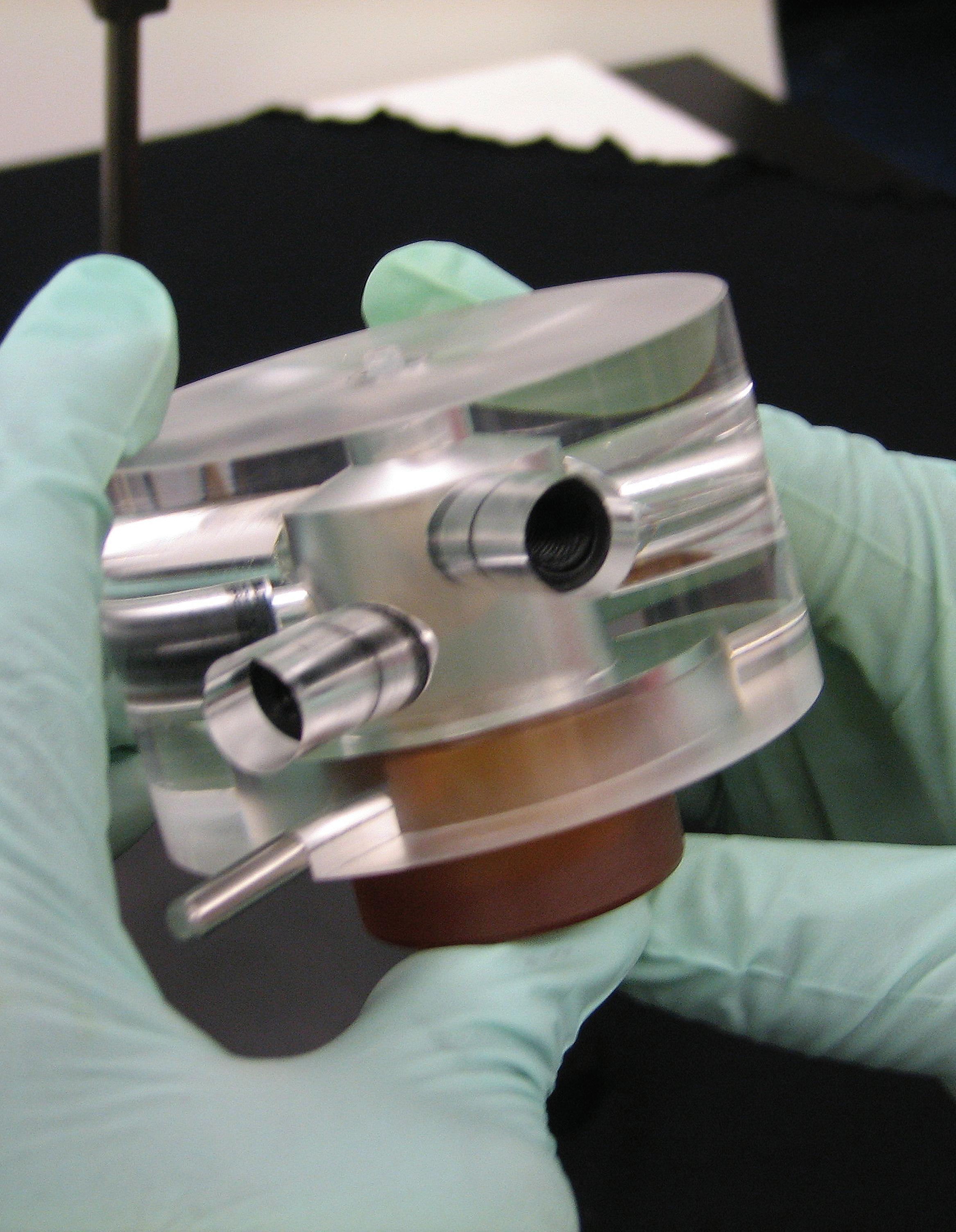ARmark manufactures these 100% solid extruded microspheres using High Definition Micro Extrusion (HDME). Photo: ARmark.
Corporate Partner Profile:
aRmark Indisputable By Mary SpIro
F
ingerprints are one way to prove that a person is who he says he is. But how does one authenticate an electronic device, a document, or pill without interfering with its function or purpose? That’s the job of Pennsylvania-based company ARmark Authentication Technologies, LLC , a subsidiary of Adhesives Research and corporate partner of Johns Hopkins Institute for NanoBioTechnology (INBT) since 2009. ARmark develops made-to-order authentication systems that help organizations protect their brands and prevent counterfeiting. Through a proprietary technology, ARmark developed markers called “information centric microtags” that have become valuable to the pharmaceutical, medical device, luxury goods, secure documents, foods and clothing industries. The microtags can display any type of information required for authentication, such as logos, batch codes, or pharmaceutical formulas. The company claims the microtags work so well, their results are “indisputable,” and they use the word as part of their trademark. Although the microtags are small, that’s not the reason ARmark has an interest in working in nanobiotechnology. The company’s latest endeavor involves a uniquely devised Microvector™ Drug Delivery Technology. “More than 75 percent of our corporate research focuses on health care,” says Peter Gabriele, a technical director at ARmark and co-inventor of the microvector technology. “We are one of three divisions of Adhesives Research. Adhesives Research has been involved in the development of other drug delivery systems such as transdermal patches and microfluidic devices. Our ARx division developed the dissolvable drug delivery technology for Theraflu strip.” By marrying the technologies used in the microtag to their
knowledge of drug delivery, Gabriele says, the next logical step was to create something like the microtag with a therapeutic cargo. “If we could load the microtag up with data, why not a drug?” he says. Under Gabriele’s direction, the company’s ARmicron Life Science section fabricated the Microvector™ via a process called high definition micro-extrusion (HDME). Gabriele describes this process as something like a “vertical dot-matrix printer.” The Microvector™ material builds up into a long strand that can be sliced into shorter sections. When the sections contact liquid, they ball up into uniformly shaped spheres that encapsulate their pharmaceutical payload. “It’s a very stable microparticle that holds nanoparticles like passengers on a ferry,” Gabriele says. The HDME method can create Microvector™ of different shapes and with different properties. Just by changing the materials used, Microvector™ that heat up or shine when imaged can be quickly made, Gabriele says. ARMark sees numerous opportunities in their affiliation with INBT, and he says the corporate partnership program is a perfect union of forward-thinking and pragmatism. “All of a sudden, it makes the dream concept a little more realistic because the INBT researchers recognize what is merely theoretical and what has practical potential,” Gabriele says. “The idea of having a commercial entity working with an academic institution generates the type of conversation that gets you to your endpoint faster.” To read more about ARMark’s Microvector™ Drug Delivery Technology, go to http://www.rmark.org/login.html®
2010 Environmental and Health Engineered Nanomaterials | 13 2010 Environmental andImpacts Health of Impacts of Engineered Nanomaterials | 13
















